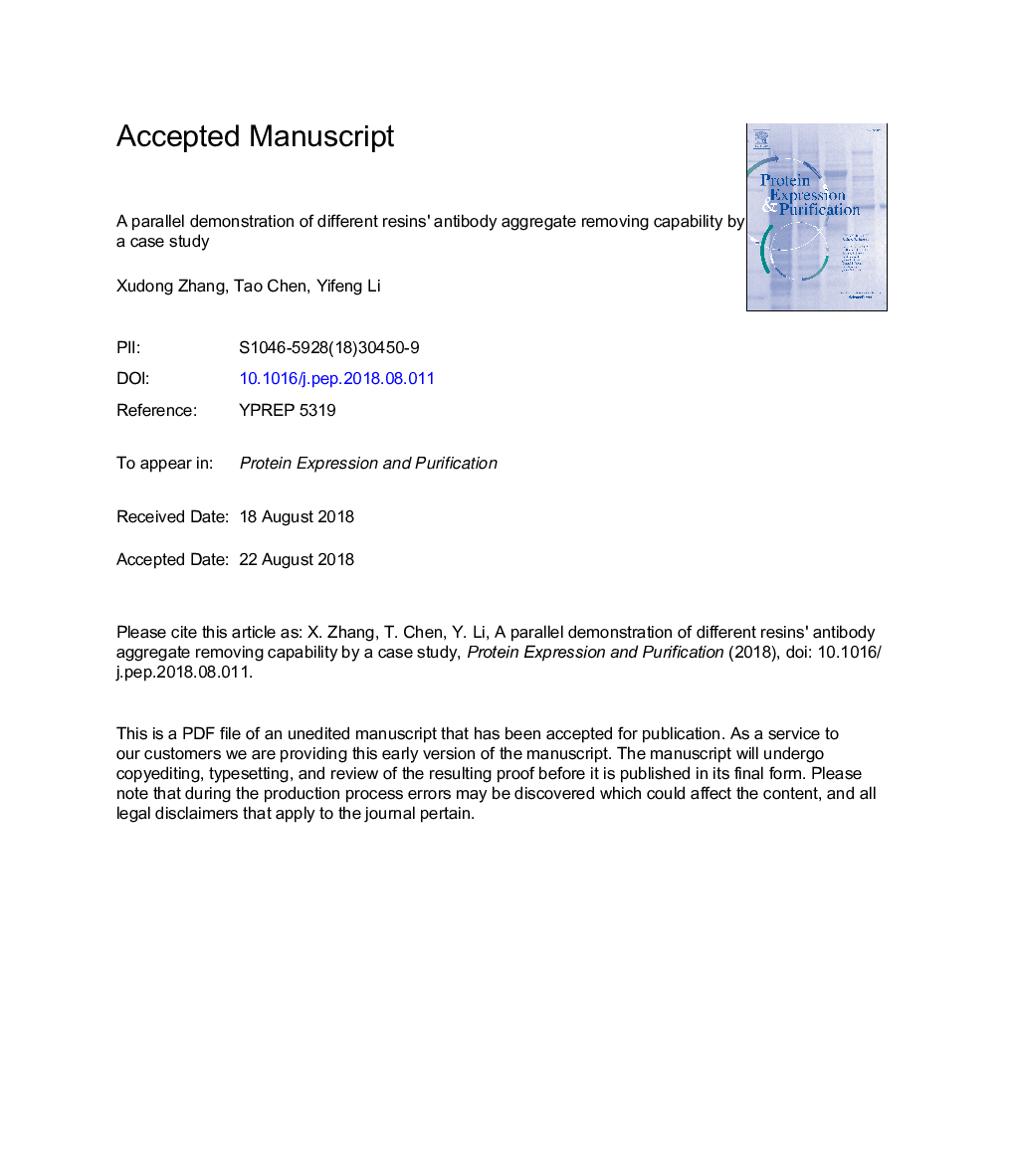| Article ID | Journal | Published Year | Pages | File Type |
|---|---|---|---|---|
| 9954236 | Protein Expression and Purification | 2019 | 35 Pages |
Abstract
Aggregation is a major concern for therapeutic monoclonal antibody (mAb), as aggregates reduce drug efficacy and safety. In addition to aggregation control, aggregate removal by downstream processing is crucial. Hydrophobic and mixed-mode resins are widely used for aggregate removal in different cases, but they are seldom compared side by side. In this study, the aggregate removing capability of eight resins belonging to different chromatographic types was demonstrated by a case study. This work, by providing multiple options for aggregate removal, allows more flexibility to be gained in downstream processing.
Keywords
SEC-HPLCHydrophobic interaction chromatography (HIC)mAbCEXCHTBsAbAExIEXscFvMonoclonal antibodybispecific antibodyHICChoCation exchangeIon exchangeChinese Hamster OvaryFlow-throughAggregate removalcolumn volumesingle-chain variable fragmentMALSAnion exchangeHydroxyapatiteHydroxyapatite (HA)Ceramic hydroxyapatitemulti-angle light scatteringpolyethylene glycolPolyethylene glycol (PEG)PEGhydrophobic interaction chromatography
Related Topics
Life Sciences
Biochemistry, Genetics and Molecular Biology
Biochemistry
Authors
Xudong Zhang, Tao Chen, Yifeng Li,
